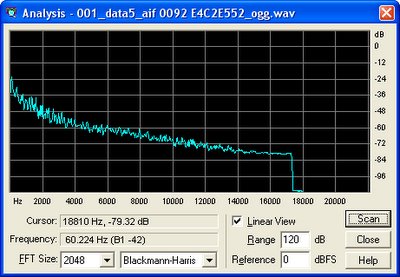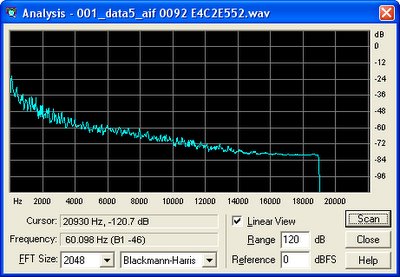Yeah, so that title kind of sucks. What it's supposed to mean is: what anime/manga (note the glossary at the end of the post) Q recommends you get yourself for Christmas (and would consider them all worth the money).
Ai Yori Aoshi (
manga &
anime). A "guys'" love story about two rich (before the guy ran away from his home, that is) kids betrothed to be married, and trying to get along living together (and, of course, plenty more female characters that love the guy as well). Lots of humor, an amusing story, and typical Japanese ecchi* (though not hentai). I originally started watching this series because it sounded similar to one of the stories I wrote; this similarity ended up being pretty shallow, but I still liked the series a lot.
Azumanga Daioh (
manga). Awesome comedy series about the daily life of a group of... unique Japanese high school girls, and their equally unique teachers. There's also an
anime version, but I don't consider it near as good, as the conversion from the comic strip format of Azumanga Daioh to anime is quite poor.
Elfen Lied (
anime). An extremely vicious diclonius (a two-horned human subspecies, with a number of invisible arms - vectors) escapes from a research facility that has been experimenting on her (and other diclonius) for years. A second, infantile personality develops, allowing her to live peacefully with a boy and his cousin, until the research facility attempts to reclaim her, and her original personality reappears. Primarily drama and action (with very graphic violence), but also a good amount of comedy, and ecchi. There's also a manga, which covers almost twice as much material as the anime, but it has yet to be released in English (and fan translator groups have only gotten about 1/4 through translating).
Full Metal Panic (
manga and
anime). An elite mercenary (raised in war zones worldwide) has difficulty adjusting, when he is sent to live the life of a Japanese high school student while protecting a female student from a terrorist organization. Best for it's comedy, but also a moderate amount of drama. Can occasionally be ecchi.
Great Teacher Onizuka (
manga and
anime). None-too-bright biker gang leader turned teacher takes on the school's most delinquent class, and proves that he can do a better job teaching with his brawn and heart than the other teachers can do with their ivy-league diplomas. Comedy and drama, with a bit of ecchi. The manga is almost twice as long as the anime.
Love Hina (
manga). The lord of ecchi (more than my taste, actually, but it has more than enough good stuff to make up for it). The story of a boy (attempting to enter Tokyo University, the most prestigious college in Japan) who inherits an inn turned girls' dormitory from his grandmother. In this process he develops various relationships (of various natures, and only one of them ending up being romantic) with the girls in the dorm. Hilarious comedy, as well as drama, and a bit (okay, maybe more than a bit) too much ecchi. There's also an anime, which contains some material not in the manga (although the reverse is true, as well), but I don't like it as much as the manga (although I do prefer the ecchi-light of the anime, which is the one I saw first).
Noir (
anime). A pair of assassins make their services available for hire under the name of 'Noir', but soon discover that the name was already used by an ancient secret society. An interesting and amusing series (primarily drama), though things sort of start to suck near the end.
Rurouni Kenshin (
manga and anime). Fictional story set in historical Japan (around the 1860s) and anchored around real events and people. Kenshin, a legendary assassin/warrior from the Meiji Revolution (a fictional character, although inspired by the real Hitokiri Gensai from that time) vowed that after the revolution he would no longer kill, but find another way to continue to help the people of the world. So, he wanders from place to place, doing what he can, using his legendary swordsmanship and sakabato (a reverse-bladed katana, where the normal cutting blade is merely a blunted edge, and thus cannot be used to kill). Primarily drama, with a good dose of comedy. I'd consider the manga better than the anime, although both contain material not in the other.
School Rumble (manga and anime). Kenji (male) enters high school with a proud reputation as a delinquent, and has his eyes set firmly on Tenma (female). Tenma, however, is too thoroughly smitten by Oji (male) to notice; Oji also seems to be pretty clueless in general, let alone about her interest in him. Primarily comedy, some drama.
Stars (Seikai) Trilogy (Crest of the Stars, Banner of the Stars, Banner of the Stars II;
manga and anime). A sci-fi series about a noble human boy entering the Abh (you just know the original design concept was 'blue-haired elves in space') military, where he becomes a friend of an Abh princess also in training, who commands her own small ship. Ultimately, a war breaks out between human and Abh, which they must participate in. War, culture clash, growing up, falling in love, etc.; primarily drama, but some comedy (and it's rare for the Japanese to not throw in at least a tiny bit of ecchi for good measure).
Yotsuba &! (manga). Another hilarious comedy series by the author of Azumanga Daioh, about an exuberant (and rather psycho) little girl, enjoying life to the fullest.
Glossary:
Anime: Japanese "cartoons". Unlike American cartoons, anime may be for any age group, and may, in the extreme case, be pornographic.
Ecchi: Kind of like 'risque' or 'lewd'. Anything from panty shots to actual nudity (in Japan this is acceptable material for network television).
Hentai: Animated pornography (note that nudity alone is not sufficient to call something hentai).
Manga: Japanese "comics". Again, may be made for any age group, and may even be pornographic.










